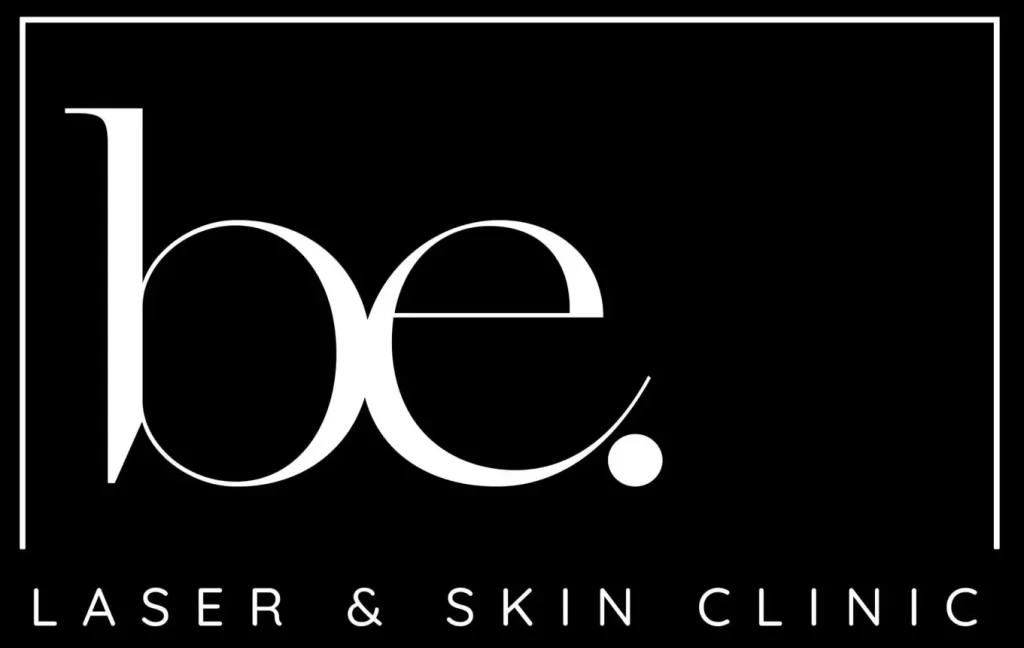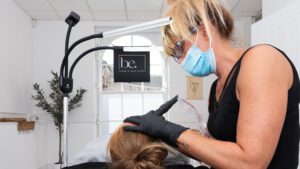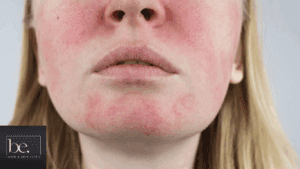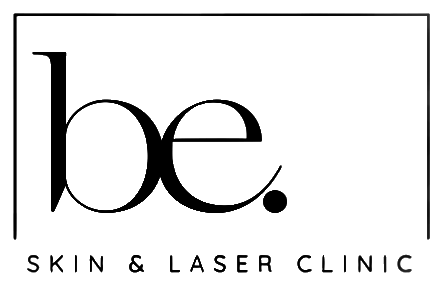Ever thought about getting rid of that old tattoo but also wanted to sort out some unwanted hair? Well, good news! Combining tattoo fading and hair removal is totally a thing, and it’s safer than you might think. We’re going to chat about how these dual laser treatments work together, what to expect, and how you can get the best results. It’s all about making smart choices for your skin.
Key Takeaways
- Dual laser treatments use different laser types to handle tattoos and hair, making sure each job is done right without causing problems.
- Getting ready for your sessions means avoiding sun and having a good chat with your specialist about your skin and what you want to achieve.
- During the treatment, you might feel a bit of discomfort, but it’s usually quick, and there are ways to make it easier.
- After your sessions, looking after your skin is super important for good results and to help everything heal properly.
- How well dual laser treatments work depends on things like your tattoo’s age, your skin, and having a qualified person doing the work.
.
Understanding Dual Laser Treatments
The Science Behind Ink Fading
So, how does this whole tattoo fading thing work with lasers? Well, it’s all about targeting the ink particles in your skin. The laser emits short pulses of high-intensity light that the ink absorbs. This energy causes the ink to shatter into smaller particles. Your body’s immune system then gradually clears away these tiny fragments, causing the tattoo to fade over time. Different lasers are used for different ink colours, which is why dual treatments can be so effective – we’re hitting the tattoo with everything we’ve got!
Targeting Different Pigments
Tattoos come in a rainbow of colours, and each colour absorbs light at different wavelengths. That’s why a single laser isn’t always enough to remove a multi-coloured tattoo. Dual laser treatments use two different lasers, each with a specific wavelength, to target a broader range of ink pigments. Think of it like having two different keys to unlock different parts of the tattoo. This approach means we can tackle even stubborn blues, greens, and yellows that might not respond well to a single laser. It’s all about getting the right tool for the job.
Safety of Advanced Technology
I get it, the idea of blasting your skin with lasers can sound a bit scary. But rest assured, laser technology has come a long way, and when performed by a qualified practitioner, dual laser treatments are generally considered safe. The lasers are designed to target the ink or hair follicle while minimising damage to the surrounding skin. Of course, there are always potential side effects, like redness or temporary skin lightening, but these are usually mild and resolve on their own. It’s always best to go to a reputable clinic and have a thorough consultation to discuss any concerns. For example, it’s important to understand if laser hair removal is safe for your skin type.
It’s important to remember that not all clinics are created equal. Make sure your practitioner is properly trained and certified, and that they use FDA-approved lasers. Don’t be afraid to ask questions and do your research before committing to any treatment.
Here’s a quick rundown of what makes laser treatments safer these days:
- Precision Targeting: Lasers are designed to target specific pigments, reducing the risk of damage to surrounding tissue.
- Adjustable Settings: Practitioners can adjust the laser’s settings to match your skin type and the specific ink colours being treated.
- Cooling Systems: Many lasers have built-in cooling systems to protect the skin and minimise discomfort.
.
Preparing for Your Dual Laser Treatments
Pre-Treatment Guidelines
Alright, so you’re thinking about getting both tattoo fading and hair removal done at the same time? Smart move! But before you jump in, there are a few things you need to do to prep your skin. First and foremost, avoid sun exposure like the plague for at least two to four weeks before your appointment. Seriously, even a little bit of a tan can mess with the laser and increase your risk of side effects.
Here’s a quick checklist:
- No tanning beds or sunbathing.
- Slather on the SPF if you’re going to be outside.
- Avoid self-tanners.
.
Also, skip the lotions, oils, and makeup on the areas you’re getting treated on the day of your appointment. Clean skin is happy skin when it comes to lasers. Oh, and make sure you’re well-hydrated and have eaten something before you come in. Nobody wants to faint during their laser session!
Consultation and Assessment
Before we even think about firing up the lasers, you’ll have a consultation. This is where you get to chat with the practitioner about your goals, your medical history, and any concerns you might have. They’ll take a good look at your tattoo (size, colours, age – the whole shebang) and assess your skin to make sure you’re a good candidate for dual treatment. Honesty is key here. Don’t hold back on any medical info, even if it seems irrelevant. It’s all important for ensuring your safety and getting the best possible results.
Skin Type Considerations
Not all skin is created equal, especially when it comes to lasers. Your skin type plays a big role in how well you’ll respond to treatment and what settings the practitioner will use. People with darker skin tones are more prone to certain side effects, like hyperpigmentation (darkening of the skin) or hypopigmentation (lightening of the skin).
To give you an idea, here’s a simplified table:
| Skin Type | Laser Settings | Potential Risks |
|---|---|---|
| Light | Higher | Sun Sensitivity |
| Dark | Lower | Pigment Changes |
Don’t worry, a good practitioner will know how to adjust the laser to suit your specific skin type and minimise any risks. They might even do a test spot to see how your skin reacts before treating a larger area. It’s all about being cautious and getting the best outcome for you.
The Dual Laser Treatments Experience
What to Expect During Your Session
Alright, so you’ve booked your dual laser treatment – exciting stuff! Let’s walk through what a typical session looks like. First off, expect to be prepped by a technician. They’ll clean the areas being treated and might apply a numbing cream. This usually needs about 20-30 minutes to kick in, so bring a book or something to keep you occupied. Once you’re prepped, you’ll be given protective eyewear – think super cool goggles. The laser itself feels a bit like a rubber band snapping against your skin. It’s not unbearable, but it’s definitely noticeable. The length of the session depends on the size of the tattoo and the area being treated for hair removal, but it could be anywhere from 20 minutes to over an hour. The technician will go over the tattooed area and the hair removal area with the appropriate laser handpiece.
Managing Discomfort
Okay, let’s be real, laser treatments aren’t exactly a walk in the park. But there are ways to manage any discomfort. As mentioned, numbing cream is your best friend. Make sure it’s a good one, and apply it generously before your appointment. During the session, the clinic might use a cooling device that blows cold air onto your skin, which really helps. If you’re feeling particularly sensitive, don’t be afraid to speak up! The technician can adjust the laser settings or take short breaks. Some people find that taking an over-the-counter pain reliever like paracetamol beforehand also helps. Communication is key – let them know how you’re feeling.
Immediate Post-Treatment Observations
Right after your session, expect the treated areas to be a bit red and swollen. It might feel a bit like a mild sunburn. For the tattoo area, you might see something called “frosting” – this is where the treated area looks white. Don’t panic! It’s just a temporary reaction and fades pretty quickly. The hair removal area might have some raised bumps around the hair follicles. Again, totally normal. The technician will usually apply a soothing cream or gel to help calm things down. They’ll also give you specific aftercare instructions, so listen up! You’ll probably need to avoid direct sunlight and keep the area clean and moisturised. It’s also a good idea to wear loose clothing to avoid any irritation. Remember, everyone’s skin reacts differently, so don’t be alarmed if your experience varies slightly. If you’re considering tattoo fading versus full removal, it’s worth discussing the immediate post-treatment effects with your practitioner.
It’s important to remember that everyone’s pain threshold is different. What one person finds manageable, another might find quite uncomfortable. Don’t compare your experience to others. Focus on managing your own discomfort and communicating with your technician.
Here’s a quick checklist of what to expect:
- Redness and swelling
- Possible frosting (tattoo area)
- Raised bumps (hair removal area)
- Sensitivity to touch
.
Post-Treatment Care for Optimal Results
Right, so you’ve braved the dual laser treatment – congrats! Now comes the bit that’s absolutely vital: looking after yourself properly afterwards. It’s not just about fading that tattoo or getting rid of unwanted hair; it’s about making sure your skin heals well and you get the best possible results. Think of it as investing in your investment, yeah?
Essential Aftercare Instructions
First things first, keep the treated area clean. I’m talking gentle washing with mild, fragrance-free soap and lukewarm water. Pat it dry – don’t rub! For the first few days, you’ll want to apply a thin layer of healing ointment (the clinic will usually recommend one) and cover it with a sterile dressing. Change the dressing as instructed. Basically, treat it like a delicate little flower. Oh, and avoid any harsh chemicals or perfumed products on the area until it’s fully healed.
Promoting Healing and Preventing Complications
Okay, listen up, because this is important. Sun exposure is a massive no-no. UV rays are not your friend right now. Keep the treated area covered, and when you absolutely have to be outside, slap on a high-factor, broad-spectrum sunscreen. We’re talking SPF 30 or higher. Also, stay hydrated. Drink plenty of water to help your body heal. And try to avoid smoking and excessive alcohol, as they can both slow down the healing process. Finally, avoid strenuous physical activity for a few days after treatment. While exercise increases blood flow, it’s advisable to take a few days off from strenuous activities immediately after treatment to prevent swelling and irritation. You want to give your skin a chance to recover, right?
Recognising Normal Side Effects
Don’t freak out if you see some redness, swelling, or even a bit of blistering. It’s all part of the process. It’s normal for your skin to turn a little grey or a whitish “frosting” effect on the tattoo. However, if you notice signs of infection – like increased pain, pus, or a fever – get in touch with the clinic straight away. It’s always better to be safe than sorry. Also, avoid picking at scabs or blisters. Allow them to heal naturally without picking, as this reduces the risk of scarring and infection. Remember, everyone’s skin is different, so healing times can vary. Just be patient and follow the aftercare instructions, and you’ll be golden. If you’re considering tattoo fading versus full removal, remember that aftercare is crucial regardless of your choice.
Aftercare is not just a set of instructions; it’s an investment in the success of your treatment and the health of your skin. By following these guidelines diligently, you’re actively participating in the healing process and ensuring the best possible outcome.
Factors Influencing Dual Laser Treatments Outcomes

It’s not a one-size-fits-all situation, is it? Loads of things can affect how well your dual laser treatments work. Let’s have a look at some of the main players.
Tattoo Age and Ink Characteristics
Right, so, think of your tattoo like a bit of history etched onto your skin. Older tattoos are generally easier to fade because the ink has already started to break down a bit over time. Newer tattoos? They’re fresh, vibrant, and a bit more stubborn. Also, the type of ink matters. Professional tattoos, done with high-quality inks, can be deeper and denser, meaning they might need more sessions than, say, that dodgy one you got on holiday.
Individual Skin Response
Everyone’s skin is different, isn’t it? How your skin reacts to the laser is a big deal. Some people’s skin might clear the ink particles away quicker than others. Things like your skin tone, its sensitivity, and even how well you look after it all play a part. If you have darker skin, there’s a slightly higher risk of hypopigmentation, so it’s super important to have a proper chat with your practitioner about this beforehand. They’ll know how to adjust the laser settings to minimise any risks. For example, ND:YAG and Diode laser technologies are often compared for safety.
The Role of a Qualified Practitioner
This is probably the most important thing, to be honest. You absolutely need someone who knows their stuff doing your treatments. A qualified and experienced practitioner will assess your skin, your tattoo, and your medical history to create a treatment plan that’s right for you. They’ll also know how to use the lasers safely and effectively, minimising the risk of any complications. Don’t just go for the cheapest option – this is your skin we’re talking about!
Finding a practitioner with the right qualifications and experience is key to achieving the best possible results and minimising any potential risks. They should be able to answer all your questions and make you feel comfortable throughout the entire process.
Achieving Desired Results with Dual Laser Treatments
So, you’re thinking about getting both tattoo fading and hair removal done at the same time? Ace! Let’s talk about what you can expect in terms of results. It’s not a one-size-fits-all thing, but here’s the lowdown.
Typical Session Timelines
Okay, so how long will this all take? Well, it really depends. For tattoo fading, darker inks usually respond faster than brighter colours. And for hair removal, it depends on your hair colour and skin type. Generally, you’re looking at multiple sessions, spaced a few weeks apart. Think of it like this: you wouldn’t expect to see a masterpiece after just one art class, would you? The same goes for laser treatments. Be patient, and you’ll get there. You might also want to consider IPL skin treatments to help with the process.
Progressive Fading and Skin Improvement
What will you actually see happening? With tattoo fading, the ink will gradually break down and become lighter over time. It’s not an overnight miracle, but you’ll definitely notice a difference after each session. As for hair removal, you’ll see a reduction in hair thickness and density. The hair might grow back finer and lighter before disappearing altogether. Plus, some people report that their skin feels smoother and looks clearer after a few sessions. It’s like a bonus!
Long-Term Permanence
Now, for the big question: is it permanent? For laser hair removal, you can expect long-lasting results, but touch-up sessions might be needed down the line to zap any stray hairs that pop up. As for tattoo removal, complete removal is possible, but it depends on the tattoo itself. Some tattoos fade completely, while others might leave a faint shadow. It’s all about managing expectations and understanding that everyone’s skin responds differently. If you’re looking for a more permanent solution, you might want to consider advanced lesion removal after the tattoo is faded.
It’s important to remember that results can vary. Factors like your skin type, the type of ink used in your tattoo, and your hair colour all play a role. The best thing to do is have a chat with your practitioner to get a realistic idea of what you can expect.
Benefits Beyond Ink Removal with Dual Laser Treatments
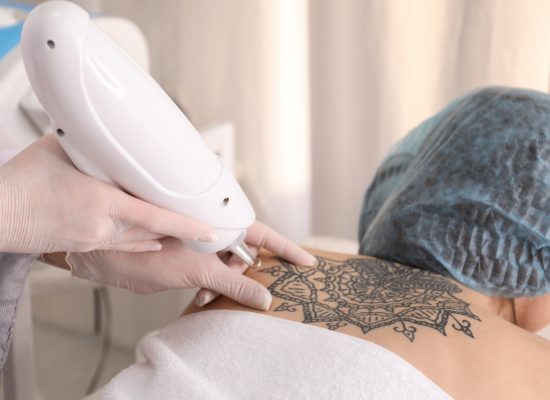
So, you’re thinking about getting that tattoo faded and some pesky hairs zapped at the same time? Awesome! But did you know there are even more perks to this dual treatment than just those two? Let’s have a look.
Enhanced Skin Texture and Tone
It’s not just about getting rid of ink or hair; it’s about what’s left behind. Laser treatments can actually give your skin a bit of a boost. Think of it like this: the laser energy can stimulate collagen production. This can lead to smoother skin and a more even skin tone over time. It’s like a little bonus facial while you’re tackling other things!
Minimising Scarring Risk
Okay, let’s be real – the thought of scarring is scary. But here’s the good news: modern laser tech, especially when used by a pro, is designed to minimise that risk. In fact, in some cases, laser treatments can even help improve the appearance of existing scars. It’s all about targeting the right things and using the right settings. If you are looking for laser tattoo removal, make sure to find a clinic that uses advanced technology.
Confidence and Well-being
This one’s a biggie. Getting rid of something that’s been bugging you – whether it’s an unwanted tattoo or annoying hair – can do wonders for your confidence. It’s about feeling good in your own skin, and that’s priceless. It’s amazing how much a small change on the outside can impact how you feel on the inside.
It’s easy to underestimate the emotional impact of aesthetic procedures. Removing a constant source of self-consciousness can free up mental space and boost your overall sense of well-being. It’s not just vanity; it’s about taking control and feeling comfortable in your own skin.
Here’s a quick summary of the benefits:
- Smoother skin
- More even skin tone
- Reduced self-consciousness
.
Wrapping It Up: Your New Beginning
So, there you have it. Getting rid of a tattoo, or even just fading it for a new design, is totally doable. It’s not some scary, impossible thing. With the right people helping you, and by following their advice, you can get the skin you want. It’s all about feeling good in your own skin, right? So, if you’ve been thinking about it, maybe now’s the time to go for it. You might be surprised how much better you feel.
Frequently Asked Questions
Plan dual session → Q-Switched Tattoo Removal
Does laser tattoo removal hurt?
Honestly, it can sting a bit, like a rubber band snapping against your skin. But it’s super quick, and most folks find it totally bearable. We can also use numbing creams or cooling systems to make it more comfy for you.
Is tattoo removal safe for darker skin?
Absolutely! Modern lasers, especially the Q-switched Nd:YAG ones, are much safer for darker skin tones. They use different light wavelengths that are kinder to skin with more melanin, reducing the risk of changing your skin’s natural colour.
Can a tattoo be removed in just one session?
Sadly, no. It’s a process. Most tattoos need a few sessions, sometimes even ten or more, to fade away completely. This is especially true for tattoos with lots of bright colours or layers of ink.
Is there a risk of scarring?
When it’s done by a pro and you follow all the aftercare advice, the chances of scarring are really low. The laser is clever; it targets the ink, not your skin cells around it.
Does this treatment also help with skin issues like texture or pigmentation?
Yes, actually! A lovely bonus of these treatments is that many people notice their skin looks smoother, pores seem smaller, and even sun spots around the treated area can fade. It’s like a little skin refresh!
How long does the whole process take?
It really depends on your tattoo – things like how old it is, what colours are in it, and where it’s located. Generally, you’ll need sessions spaced out every 6-8 weeks, and full removal can take anywhere from 6 to 10 sessions, or sometimes even more for stubborn ones.
